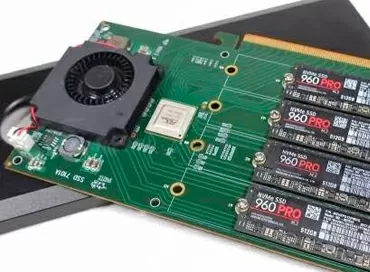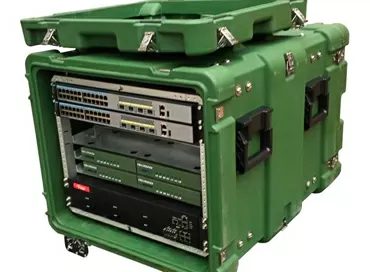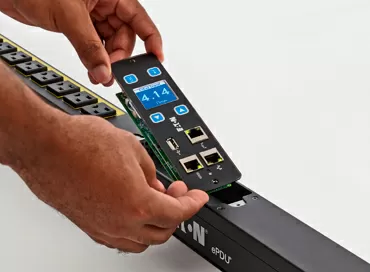ASRock Rack EPC621D4I-2M - Review of Mini-ITX motherboard for Xeon LGA3647
When Intel Xeon processors of the LGA-3647 series first appeared, many experts joked that this processor socket was so large that it was impossible to make a Mini-iTX format board on it. And now ASRock Rack showed the whole world that nothing is impossible for them, and if you need Xeon Scalable on a motherboard for a nettop - please, the company has an EPC621D4I-2M motherboard for you.
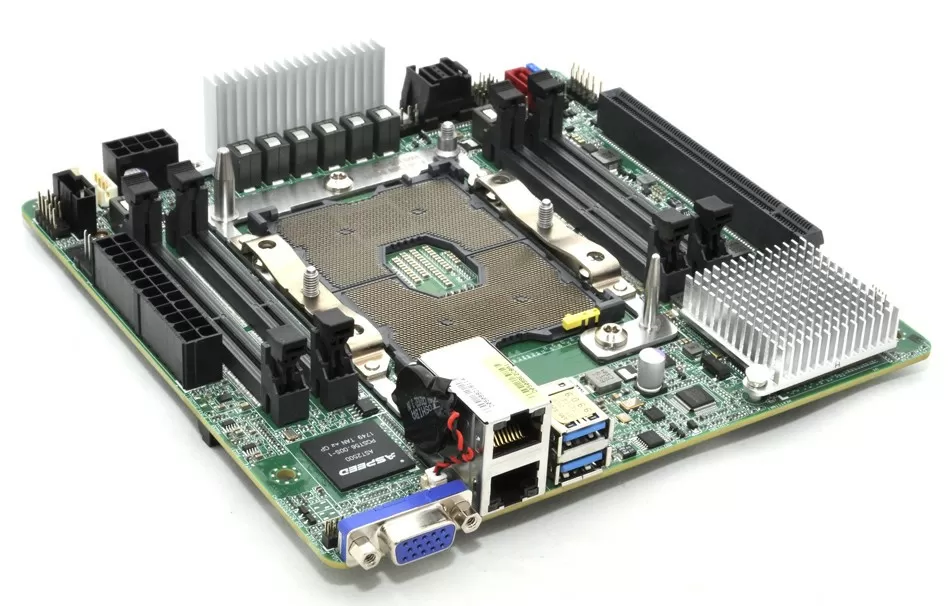
Let's pause and ask ourselves a question: for what such purposes might the Xeon Scalable platform in Mini-ITX format be required? Of course, the first thing that comes to mind is shallow depth servers designed to fit two in one cabinet unit or in short wall cabinets. Something else is mostly exotic, and in the rare cases where network gateways are installed in this way, as a rule, no one even thinks about the powerful Intel Scalable processors.
But about 10 years ago, the fashion went for universal Blade-servers, the chassis of which do not have a common backplane and are a Mini-ITX case. Of course, such servers were very rare even then, in 2011-2012, but since they are in many ways more convenient and cheaper than traditional Blade servers, including because of their versatility, you can use components from any manufacturer. At least I have no other ideas for using Xeon Scalable in Mini-ITX format.
Well, let's take a look at the EPC621D4I-2M motherboard that ASRock Rack offers. Of course, the large processor socket LGA-3647 forced the manufacturer to save space on literally everything: instead of the usual DIMM slots, SO-DIMMs are installed here, and this memory with ECC support is very rare.
Data storage
Two M.2 slots are located on the back side of the motherboard, so you have to remove the entire board from the case to install drives, which can be very inconvenient. Almost all server enclosures blow through the motherboard from the top and bottom, so you don't have to worry about the temperature of M.2 drives, but you can't put heat sinks on them, so choose cooler SSD models.
Very little is needed from the Intel C621 PCH chipset: only 5 SATA ports, only 2 PCI Express 4x for SSD and only one PCI Express 3.0 16x. Moreover, please note that the SFF-8639 port is installed for SATA drives, and the red SATA port is for SATA-DOM flash drives.
Ports
There is only a minimum of peripheral ports on the board: two gigabit network RJ45 and two USB 3.0, and the traditional VGA, which, in the presence of a smart BMC monitoring on the ASpeed 2500 chip, is hardly useful to anyone. As a rule, on motherboards with these chips, you can completely configure the server, and it will work its entire life without ever connecting a USB flash drive or monitor to it: all control is carried out over the network. BMC control is routed to the first RJ45 port according to the Out of Band Access principle.
The Marvell 88E1514-MNP2 chips are responsible for network connections, the low-level controller is Nuvoton NCT5573D. In general, the only thing worth paying attention to from the chips is the ASpeed 2500, a great solution that can be praised forever.
Of the additional internal connectors, I would like to note a TPM connector, BMC, a pair of USB and one RS232. In general, the port configuration confirms that this board is predominantly suitable for some kind of cloud computing.
Power and cooling
The processor power circuit uses a 6-phase conversion on the Renesas ISL69127 controller. On the front side of the board there is only room for keys and induction filters, and the capacitors, represented by solid-state polymer capacitors, are located on the back of the motherboard.
The power circuits of the memory modules use one phase per two SO-DIMM slots.
For cooling the server, there are 3 PWM connectors with LED indication of fan failure. If the speed of the latter has slowed down or it has stopped altogether, a red light will turn on near the socket, and you will easily understand which connector to connect the new cooler to.
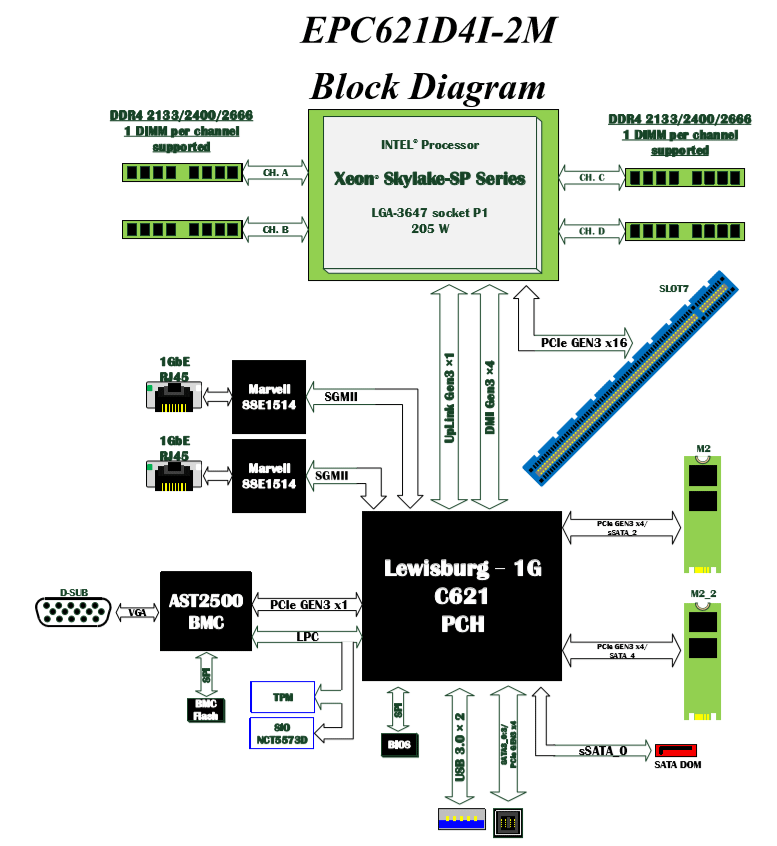
In general, the design of the board itself is a miracle and a kind of breakdown of established stereotypes. Fitting a massive south bridge and a huge processor socket in Mini ITX format is already a feat. Gigabit network ports and only 5 (including SATA DOM) SATA ports suggest that this card is still not the best option for storage systems or a network gateway, but for some ultra-compact arrays like `` my corporate cloud '' - yes, this is it.
IPMI control
BMC-control is carried out using the modern Aspeed AST2500 chip, the most modern solution with a normal HTML5 interface, which is also compatible with mobile devices. You do not need to install any client software on the operator's computer, you do not need to bother with compatibility with browsers - everything works under PC, and under MacOS, and under Linux and Android.
From the KVM interface, you can connect virtual media from a local computer, but this is the last century. It is much more convenient to mount a folder on a NAS with OS installers and choose which image and how to connect it. The machine scans the CIFS/NFS folder for .ISOs and offers you a connection not only in the form of a floppy disk or CD-ROM, but also in the form of an HDD so that you can boot over the network. True, the installation showed that Virtual Media works at a speed of about 1.5 Mb/s, which is frustrating: there was no breakthrough, but in vain, because this is not just a method of installing an OS remotely, but also a practical replacement for PXE boot.
Of course, the Java application also remains, but now it is only needed to launch the on-screen keyboard, if, for example, you find it difficult to press the F11-F12 keys under MacOS.
Power management is highlighted as a separate item, sensors and logs are separate. It's a pity that there are no graphs in the interface, I really liked to monitor temperature changes, but this is partially offset by a very clear interface for viewing logs.
BIOS
The EPC621D4I-2M motherboard has a standard AMI (Aptio) BIOS with a standard set of settings for server boards. I would like to draw your attention to the fact that the motherboard has the Watch Dog function, which for some reason is not installed in the workstation model (it has two options: NMI and Reset).
Basically, the BIOS has everything a server motherboard needs, including boot and error logs.
Testing
- Processor: 2x Intel Xeon Gold 6146
- Memory: 32GB (2x16GB) DDR PC2400
- Vmware ESXi 6.7
- Debian 9
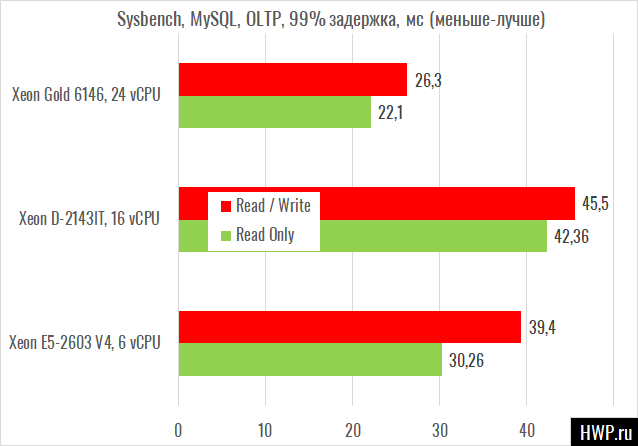
Conclusions
We have tested a very unusual motherboard, but it does not cause such a `` wow effect '' as for example with an integrated processor
What we liked:
What I didn't like:
- Total 2 Ethernet ports
- Type of memory modules - SO-DIMM
There are no analogues of this motherboard on sale, therefore, ordering it through a tender, you will receive this particular product.
Mikhail Degtyarev (aka LIKE OFF)
08/04.2019









